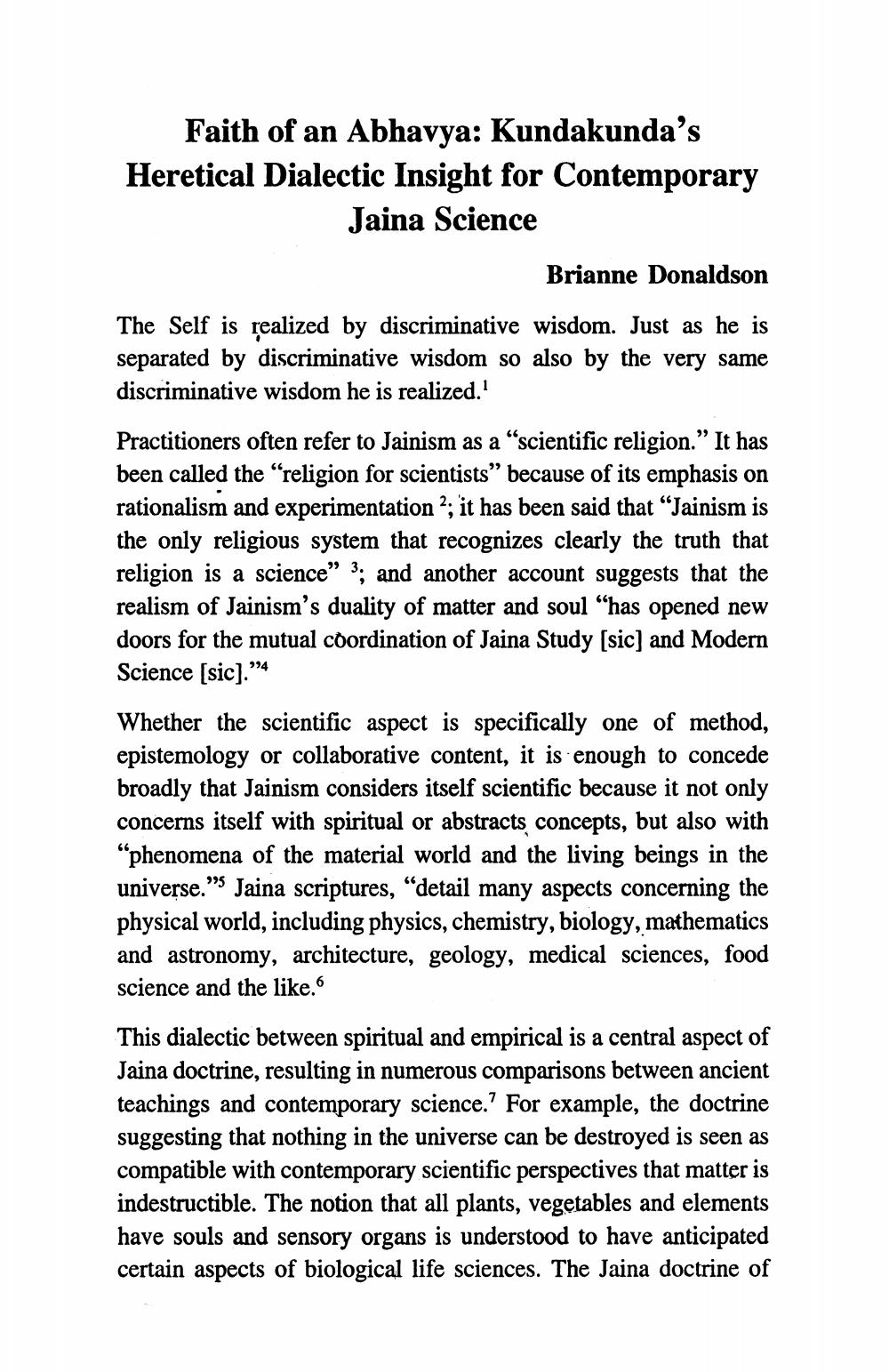________________
Faith of an Abhavya: Kundakunda's Heretical Dialectic Insight for Contemporary Jaina Science
Brianne Donaldson
The Self is realized by discriminative wisdom. Just as he is separated by discriminative wisdom so also by the very same discriminative wisdom he is realized.1
Practitioners often refer to Jainism as a "scientific religion." It has been called the "religion for scientists" because of its emphasis on rationalism and experimentation 2; it has been said that "Jainism is the only religious system that recognizes clearly the truth that religion is a science" 3; and another account suggests that the realism of Jainism's duality of matter and soul "has opened new doors for the mutual coordination of Jaina Study [sic] and Modern Science [sic]."4
Whether the scientific aspect is specifically one of method, epistemology or collaborative content, it is enough to concede broadly that Jainism considers itself scientific because it not only concerns itself with spiritual or abstracts concepts, but also with "phenomena of the material world and the living beings in the universe." Jaina scriptures, "detail many aspects concerning the physical world, including physics, chemistry, biology, mathematics and astronomy, architecture, geology, medical sciences, food science and the like."
This dialectic between spiritual and empirical is a central aspect of Jaina doctrine, resulting in numerous comparisons between ancient teachings and contemporary science.' For example, the doctrine suggesting that nothing in the universe can be destroyed is seen as compatible with contemporary scientific perspectives that matter is indestructible. The notion that all plants, vegetables and elements have souls and sensory organs is understood to have anticipated certain aspects of biological life sciences. The Jaina doctrine of




